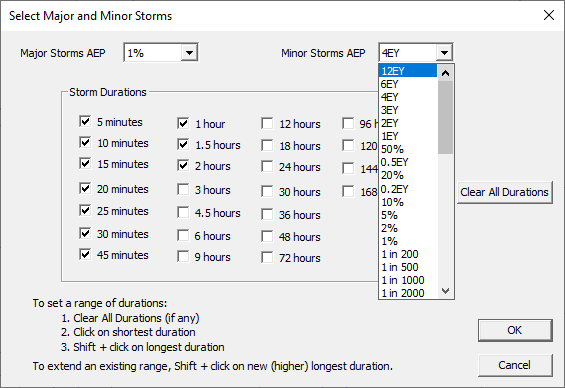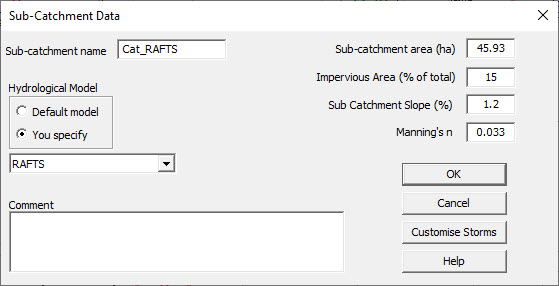Our EOFY 2025 Sale is now on! Explore Offers.
The Storage Network Routing Module adds the RORB, RAFTS and WBNM storage routing hydrological models.
These hydrological models are useful when modelling large urban or rural sub-catchment areas where estimating the time of concentration with time area routing might be difficult.
Note: DRAINS RAFTS does not rely on XP Rafts and is not affected by the discontinuation of XP Rafts by Innovyze.
As well as the ARR IL-CL, Horton (ILSAX), Rational Method & Extended Rational Method hydrological models for simulating flows using time area routing, DRAINS has optional storage routing models based on procedures applied in three hydrological models that have been used in Australia since the 1970s, and released in DRAINS since 2001 – RORB, RAFTS and WBNM.
These allow users to model catchments in a similar manner to the “runoff routing” programs, RORB, RAFTS and WBNM, using catchments and the stream reaches that connect them as non-linear storage flow routing elements.
These can be used to determine flows at many points within a catchment. In a typical rural study, the model would be set up on the basis of catchment topography and the pattern of the stream network. If gauging data were available, the model would then be calibrated by adjusting the routing parameters for the selected model type until there was good agreement between the hydrographs produced by the model and gauged catchment hydrographs. Following this, the model could then be applied with larger design floods to assess the flows at critical locations.
The facilities in DRAINS expand on those available in earlier programs, because it is possible to run some sub-catchments simultaneously with ARR 2019 IL-CL or Horton (ILSAX) hydrology and others with storage routing hydrology at the same time. Situations such as an urban drainage system influenced by tailwater from a large stream can be consistently modelled. DRAINS also offers the choice of modelling stream hydraulic grade lines exactly by specifying open channels, or by routing flows through a routed stream reach.










